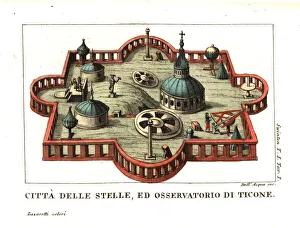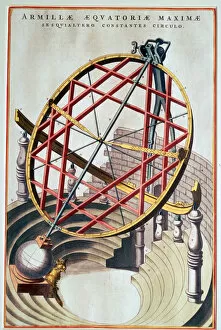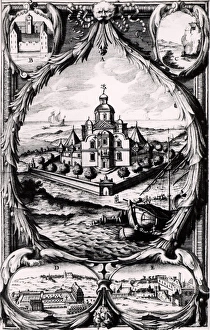Hven Collection
"Hven: Tycho Brahe's Celestial Haven" Step into the world of Danish astronomer Tycho Brahe as we explore his celestial haven on the island of Hven
All Professionally Made to Order for Quick Shipping
"Hven: Tycho Brahe's Celestial Haven" Step into the world of Danish astronomer Tycho Brahe as we explore his celestial haven on the island of Hven. Known as Uraniborg, or City of Heaven, this magnificent observatory was a testament to Brahe's passion for studying the stars. In Joan Blaeu's Atlas Major, we catch a glimpse of Uraniborg's grandeur. The impressive structure stood proudly against the night sky, its towers reaching towards the heavens. It was here that Brahe meticulously observed and recorded astronomical phenomena that shaped our understanding of the universe. As darkness enveloped Hven, Brahe embarked on countless journeys sailing away from his island sanctuary. With only moonlight guiding him, he ventured into uncharted territories in search of celestial wonders waiting to be discovered. Inside Uraniborg's walls lay an array of scientific instruments designed by Brahe himself. His mural quadrant adorned the observatory, allowing precise measurements and calculations essential to unraveling cosmic mysteries. One such instrument was the equatorial armillary created by renowned artist Joan Blaeu. This intricate device enabled Brahe to track celestial objects with unparalleled accuracy - a true marvel in 16th-century astronomy. Uraniborg served not only as a place for scientific exploration but also as a center for intellectual exchange among scholars from around Europe. It became synonymous with innovation and enlightenment during its time - an epicenter where knowledge mingled with curiosity under Tycho Brahe's watchful eye. Brahe left an indelible mark on history through his contributions to astronomy. His legacy lives on through iconic structures like Stjarneborg and Oraniborg - testaments to his unwavering dedication and pursuit of truth in understanding our cosmos. Among these remarkable achievements stands Tychos great brass globe – a symbol representing both his ambition and brilliance encapsulated within one masterpiece.










